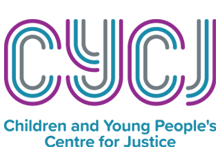When is a kid defined as a kid – and why is this inconsistent in different situations? CYCJ Associate David Orr unpicks the confusion surrounding the concept of childhood – and what this means for youth justice.
In last week’s Panorama episode – When Kids Abuse Kids (BBC1, October 9, 2017) – an investigative light was shone on the issue of harmful sexual acts perpetrated by one child on another and the apparent escalation in this form of offending. It should be noted that the programme drew solely from English and Welsh statistics. While the Scottish picture may not be identical, significant similarities across jurisdictions seem likely. In watching the programme I came back to a prickly issue which has been troubling me for some time. What do we actually mean when we talk about a “kid”?
There is an exercise I have done on numerous occasions when working with children and young people – both those who have committed acts of harmful sexual behaviour (HSB) and those involved in non-sexual offending – which tries to unpick with them the ages at which individuals are legally permitted to do certain things. The principal focus of the exercise is often to establish whether the young person has a clear understanding about the legal age of consent (16). However, it is also intended as a means of highlighting inconsistences and sources of confusion as outlined below:
Age at which a young person in Scotland can vote in local government and Holyrood elections – 16
Age at which an individual can join the Armed Forces – 16
Age at which an individual can legally drive – 17
Age at which an individual can vote in Westminster elections – 18
Age at which a young person can legally watch explicit sexual and/or violent content in an “18” certificate file – 18
The points for discussion are many and varied:
- Has the mantra, “No taxation without representation” merely become rhetoric? The principle that an individual should not be required to pay tax until s/he can also influence how that money is spent (by voting for particular politicians/political parties) does not seem to hold up under scrutiny. Many young people are taxed despite being politically disenfranchised.
- Is there not an inconsistency in a young person joining the Armed Forces at 16, being trained in the art of warfare (which may include taking human life) but not being legally permitted to watch violent film footage until the age of 18?
- Does it make sense that two consenting 17 year olds can legally have sex with one another yet neither can legally possess an explicit image of the other until both are aged 18 (see The Reward Foundation website for the particularly thorny issue of the legality of “sexting”)?
My main concern is that contradictions appear to have become enshrined in legislation in a manner that is both confusing, and in some cases extremely harmful, to children and young people. Part of the problem seems to be reluctance to commit to the United Nations Convention on the Rights of the Child (UNCRC) and the concept of childhood continuing until the age of 18. The Children’s Hearings (Scotland) Act 2011 at s.199 notes that a “child” means a “person who is under 16 years of age”. In what appears a clear contradiction, the Children and Young People (Scotland) Act 2014 at s.97 defines a “child” as “a person who has not attained the age of 18 years”. So far, so confusing.
In keeping with some of the case studies in When Kids Abuse Kids, imagine the following scenario. A 16 year-old male sexually assaults his 17 year-old female class mate at a party. He is arrested, charged and months later found guilty at trial of sexual assault under s.3 of the Sexual Offences (Scotland) Act 2009. Essentially, he is tried and convicted as an “adult”. He feels the full force of the law and receives a custodial sentence as well as being made subject to Multi-Agency Public Protection Arrangements (MAPPA). However, the charge he faces includes an aggravating factor as the victim is deemed a “child”. Moreover, as a result of the victim’s “child” status, it is necessary under the Protection of Vulnerable Groups (Scotland) Act 2007 for consideration to be given to the addition of his name to the Children’s List which will disbar him from undertaking regulated work with children in future. How can this be possible? It is because a “child” is defined under the PVG legislation as “an individual under the age of 18”. When the law has created a situation whereby a 17 year-old “child” can be the victim of an offence perpetrated by a 16 year-old “adult”, surely it is time to take stock?
Perhaps the time has come for a comprehensive review of legislation as it pertains to children and young people in Scotland to ensure greater consistency and coherence and fewer contradictions. It was Mr. Bumble in Oliver Twist who famously compared the law with an ass. One wonders what he would make of the situation!
About our blogger
David Orr is Senior Practitioner at Edinburgh Young People’s Service where he is involved in frontline social work practice with children and young people involved in offending behaviour, both in the Children’s Hearings System and the Criminal Justice System. Read more.

Leave a Reply
You must be logged in to post a comment.